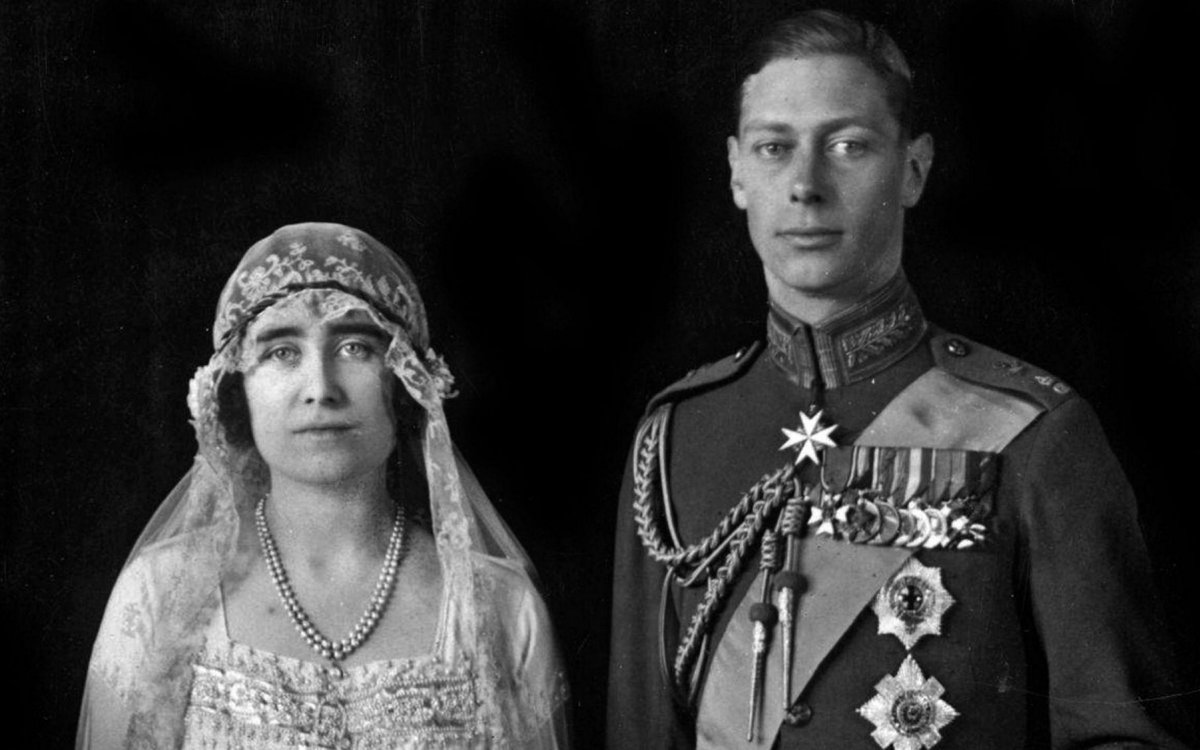
One hundred years ago today, one of the most important British royal marriages in history began with a grand wedding at Westminster Abbey in London. The couple thought they’d live a life of quiet royal duty, supporting first the groom’s father and then his brother as working members of the family, but an unprecedented abdication and a grueling war changed everything for the future King George VI and Queen Elizabeth. On this date a century ago, however, they were just a royal Duke and Duchess who were very much in love.
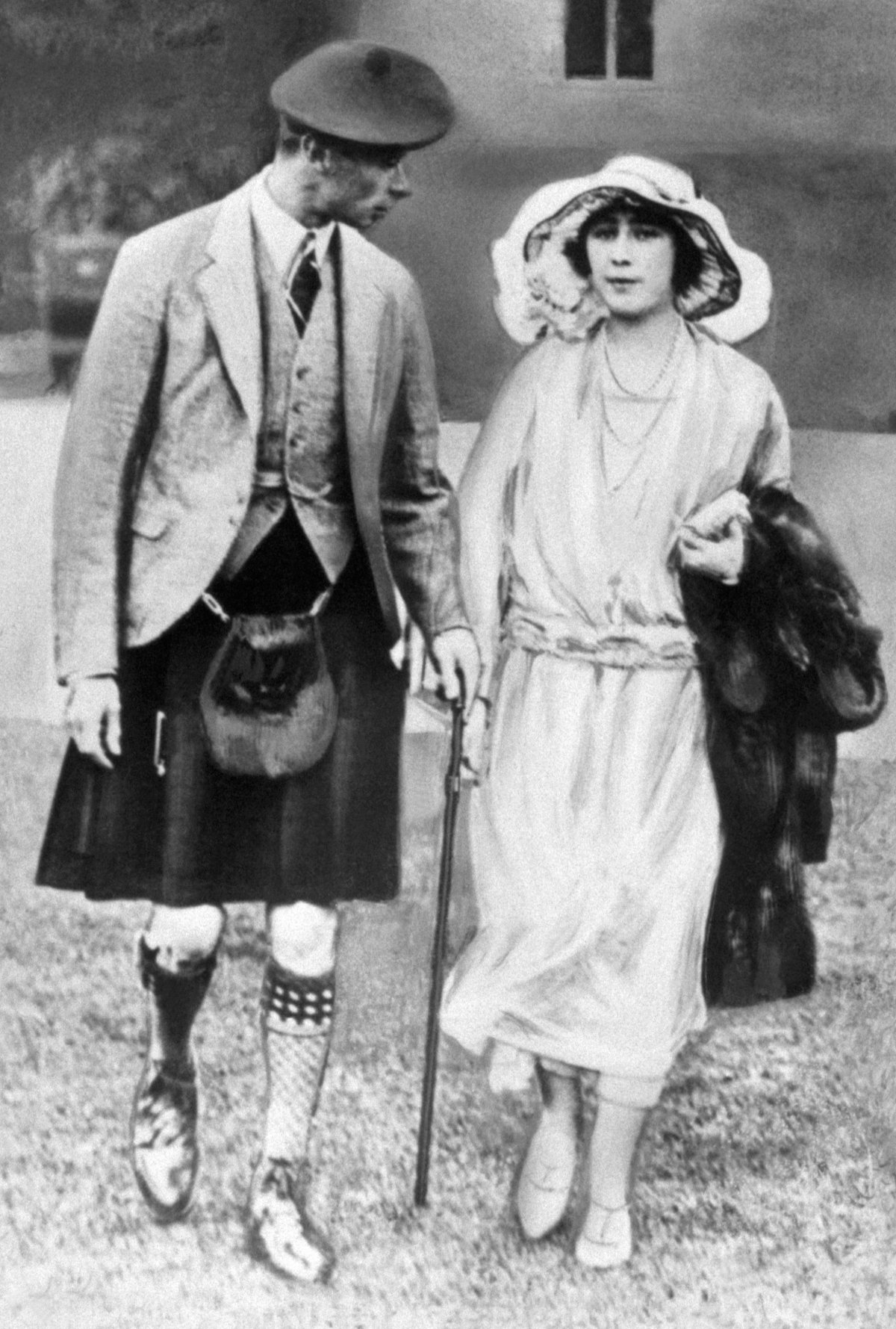
Prince Albert, Duke of York was the 27-year-old second son of King George V and Queen Mary. In the early 1920s, he fell head over heels for a witty, outgoing young aristocrat, 22-year-old Lady Elizabeth Bowes-Lyon, the youngest daughter of the Earl and Countess of Strathmore. Bertie pursued Elizabeth for several years, proposing three times before she finally decided to accept.
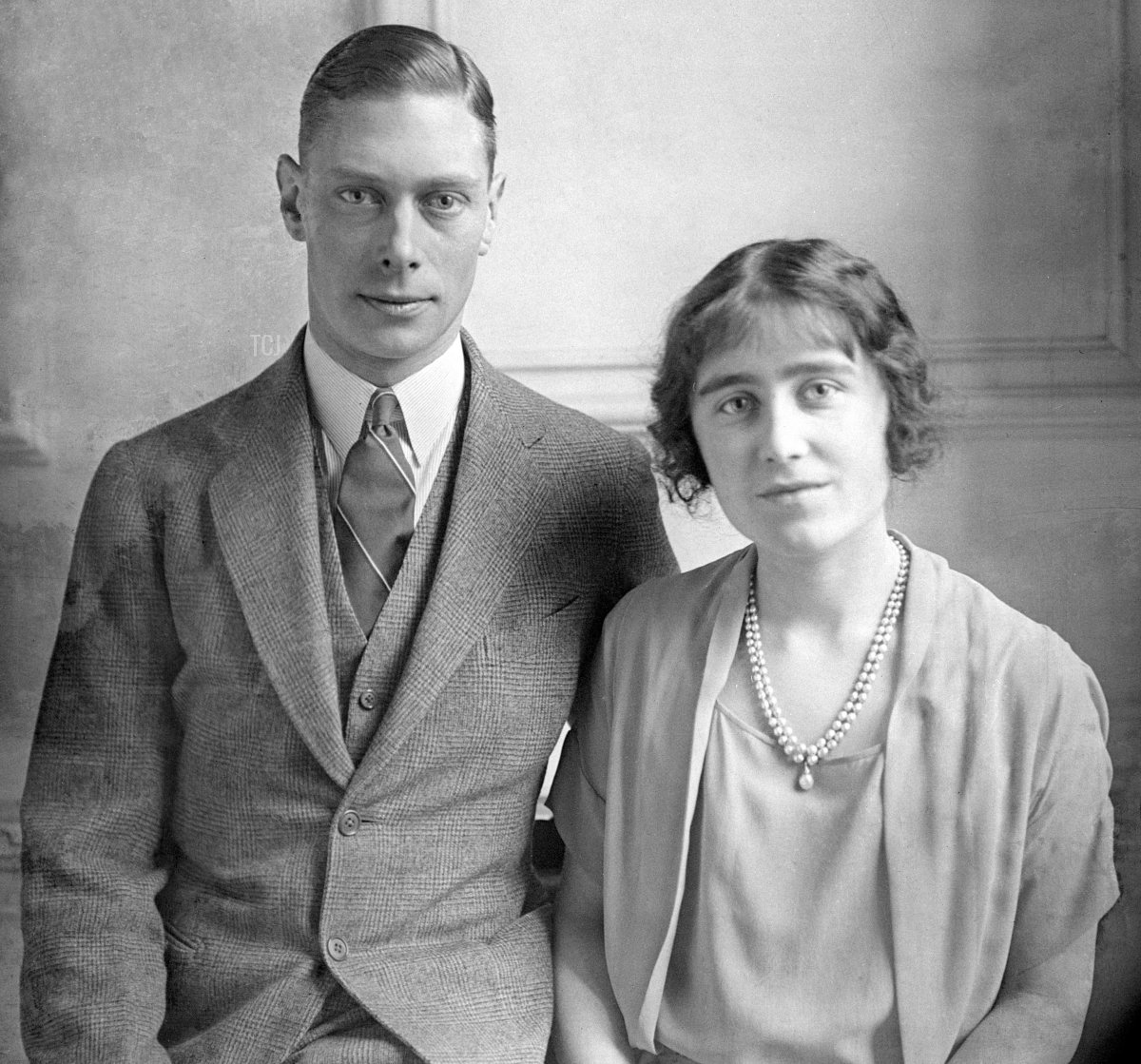
The couple’s engagement was officially announced by Buckingham Palace on the evening of Monday, January 15, 1923, in the Court Circular. “It is with the greatest pleasure that the King and Queen announce the betrothal of their beloved son, the Duke of York, to the Lady Elizabeth Bowes-Lyon, daughter of the Earl and Countess of Strathmore and Kinghorne, to which union the King has gladly given his consent,” the announcement read. This engagement portrait of the couple was taken in London later that week.
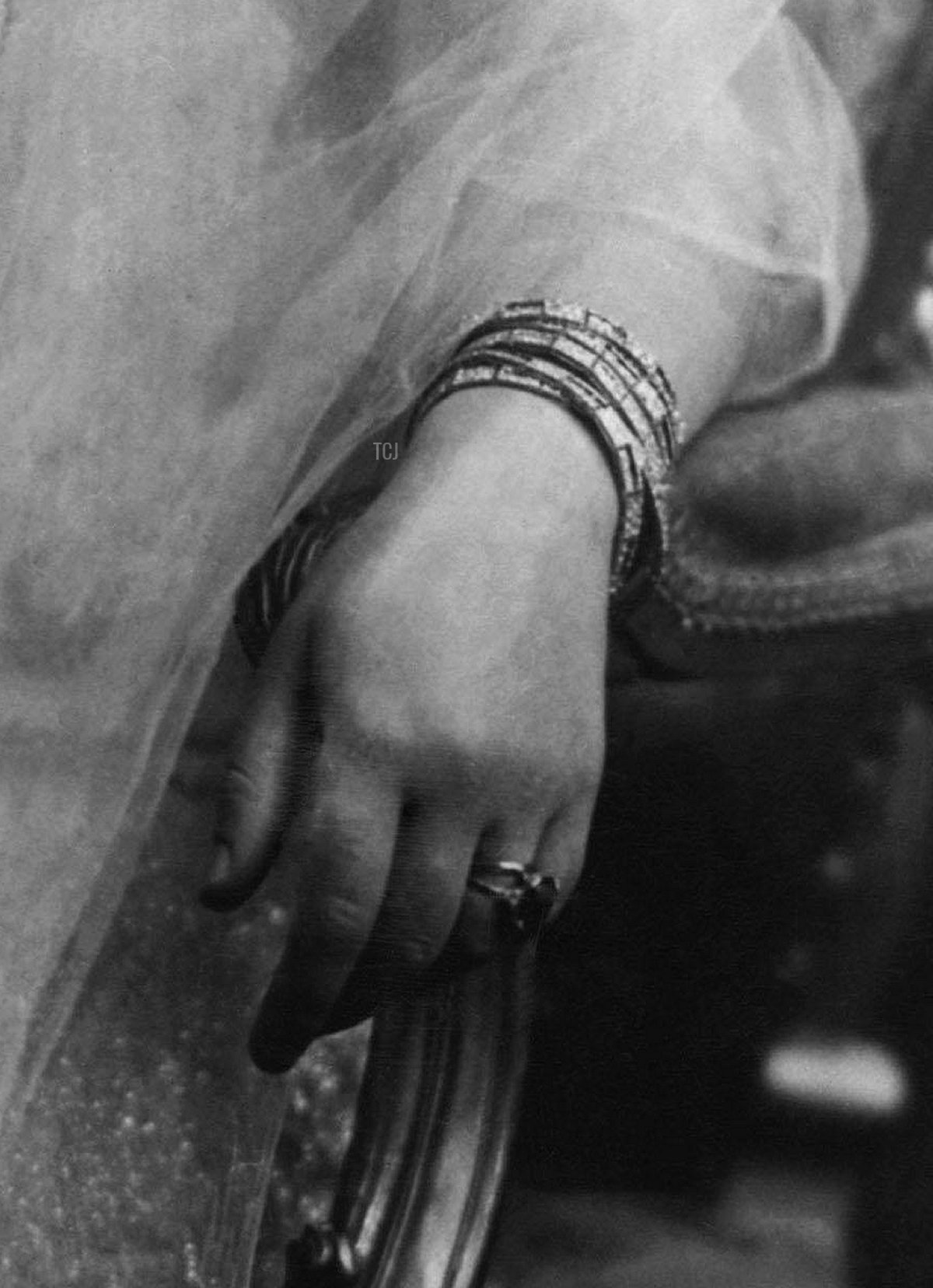
The Duke gave his fiancée with an engagement ring set with a large sapphire flanked by diamonds. A London-based jeweler, Bert & Co., came to Buckingham Palace on Tuesday, January 16, to show the Duke a selection of sapphire rings. He left the samples behind and returned the next day to find Bertie there with Lady Elizabeth. They had “mutually approved and selected,” according to the Daily Telegraph, “a ring set with three stones—a sapphire in the centre and a diamond on either side.”
The ring chosen was too large for Elizabeth’s finger, and a simple resizing would have ruined the effect of the setting, so the jeweler hastily returned to his shop at 3 Vigo Street in Mayfair to remake the ring for her. It was completed by noon on Friday, January 19, with the jeweler returning personally to the palace to hand it directly to the Duke. She wore the ring on Saturday, January 20, as she and Bertie headed with her parents to Sandringham for her first formal post-engagement visit with the larger royal family (including Queen Alexandra, Queen Maud of Norway, and Empress Marie Feodorovna of Russia).
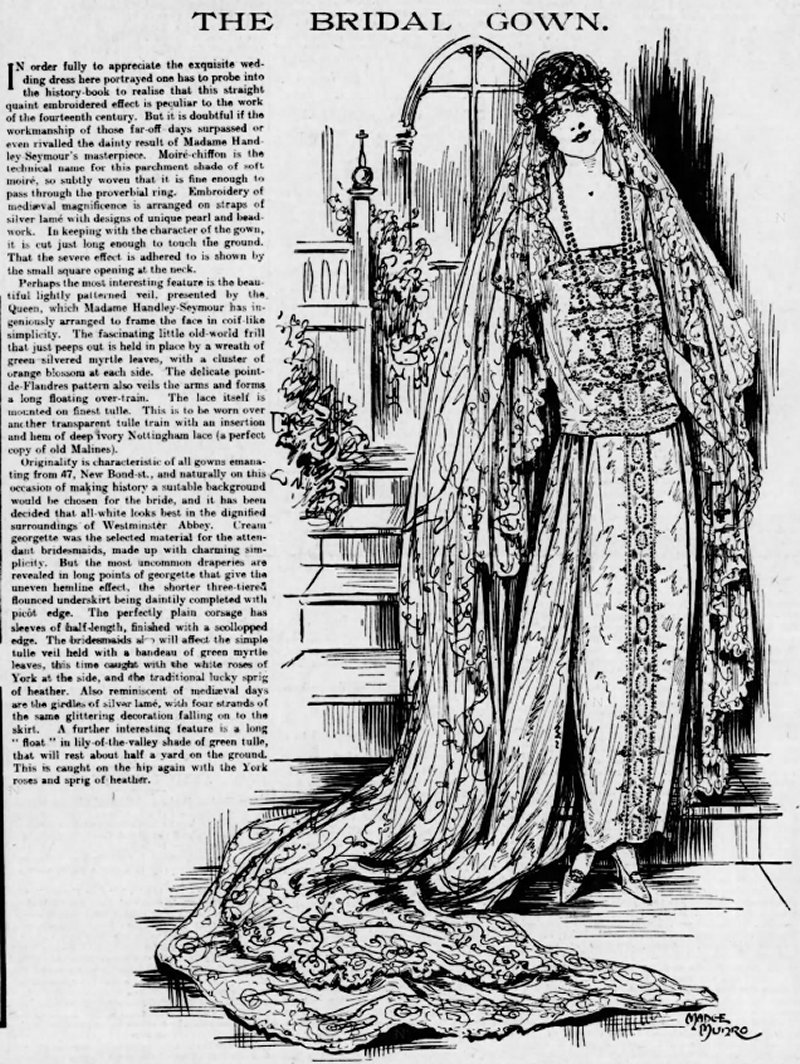
The wedding date was set for Thursday, April 26, 1923, at Westminster Abbey. A whirlwind of activities—portrait sittings, dress fittings, parties, receptions—consumed the couple’s time as the day drew near. Queen Mary directed Elizabeth to one of her favorite London couturiers, Elizabeth Handley-Seymour, for the design and construction of the wedding dress. According to the Ottawa Citizen, Lady Elizabeth had specifically stated that she wanted something “soft and flimsy” for her wedding day. Madame Handley-Seymour produced a medieval-inspired gown for the duchess-to-be, with a distinctive square neckline and elaborate embroidery with pearls and metallic thread.
Interestingly, while later royal wedding gowns were guarded like a state secret ahead of the bride’s arrival at the ceremony, Elizabeth’s dress was not. Members of the press were invited to see the gown and the other dresses made for her trousseau three days before the wedding ceremony, and a sketch of the dress was printed in the papers on the morning of the wedding day itself.
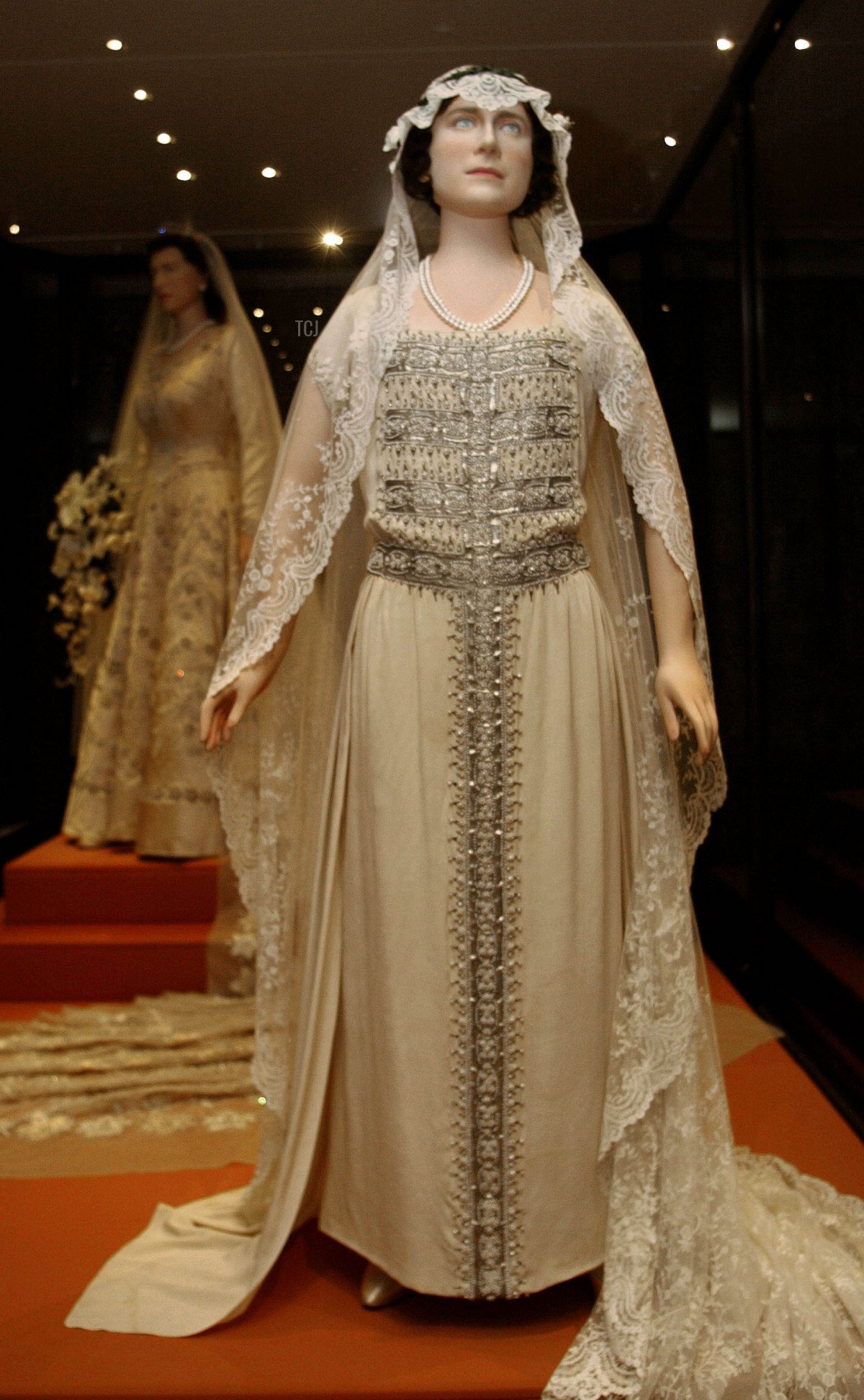
The wedding dress was made of cream-colored chiffon moiré, a color chosen specifically to coordinate with pieces of Flanders lace loaned to her by Queen Mary for the ensemble, with pieces of appliqued silver lamé. Another piece of important lace was incorporated in the gown: a strip of antique Brussels lace that had reportedly belonged to the Strathmores for generations. Legend had it that the lace was worn by one of Elizabeth’s ancestors for a ball at the Palace of Holyroodhouse in Edinburgh in the autumn of 1745, when Bonnie Prince Charlie briefly held court there during the Jacobite Rising.
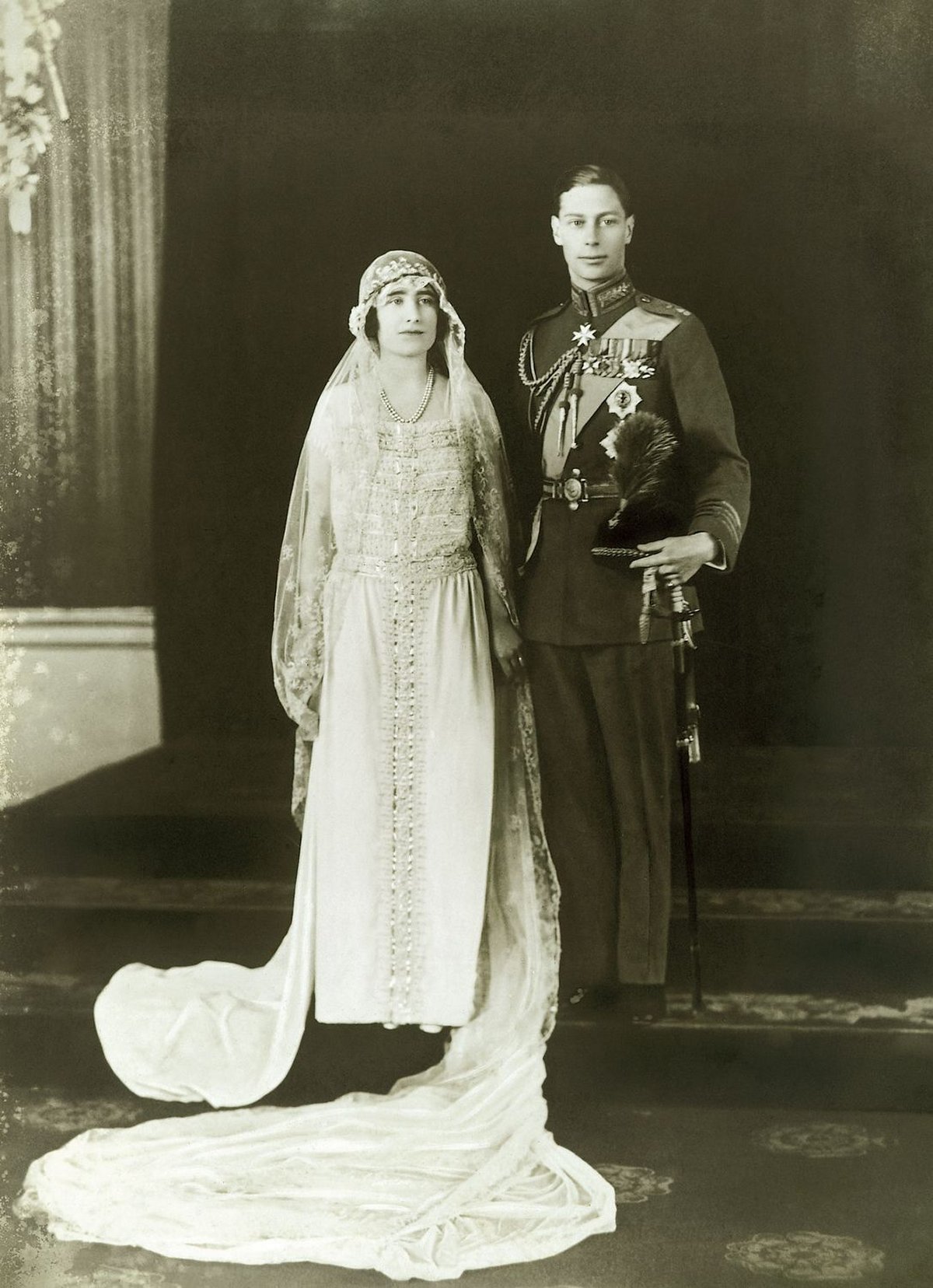
Lady Elizabeth decided not to wear a tiara with her wedding ensemble, instead using a circlet of myrtle to secure the lace veil, creating a cap-like effect. The wreath was also adorned with white roses, a reference to the House of York. It seems like an unusual choice to go tiara-less, but it was something of the norm for royal brides of this era. Tiaras and other grand jewels had fallen out of fashion a bit in the wake of the Great War, and they were only just coming back into vogue in 1923. More than one tiara was given to Elizabeth as a wedding present—we’ll be discussing that more tomorrow—but it wasn’t a surprise that she went without one on her wedding day.

Indeed, the choice to go with a wreath of flowers or leaves was the prevailing trend for royal brides in the years after the war. Princess Patricia of Connaught (later Lady Patricia Ramsay), for example, had opted for a wreath of myrtle instead of a tiara for her wedding to Alexander Ramsay in 1919. The Duke of York’s sister, Princess Mary, had also chosen not to wear a tiara for her wedding to Viscount Lascelles in 1922, opting for a wreath of orange blossoms instead. Lady Elizabeth had been a bridesmaid at that wedding.

Elizabeth’s primary bejeweled accessory on her wedding day was a double strand of pearls with a small pearl pendant. In some photographs, the pendant looks like part of the pearl embroidery on the dress, but it’s definitely a pendant on the necklace itself.
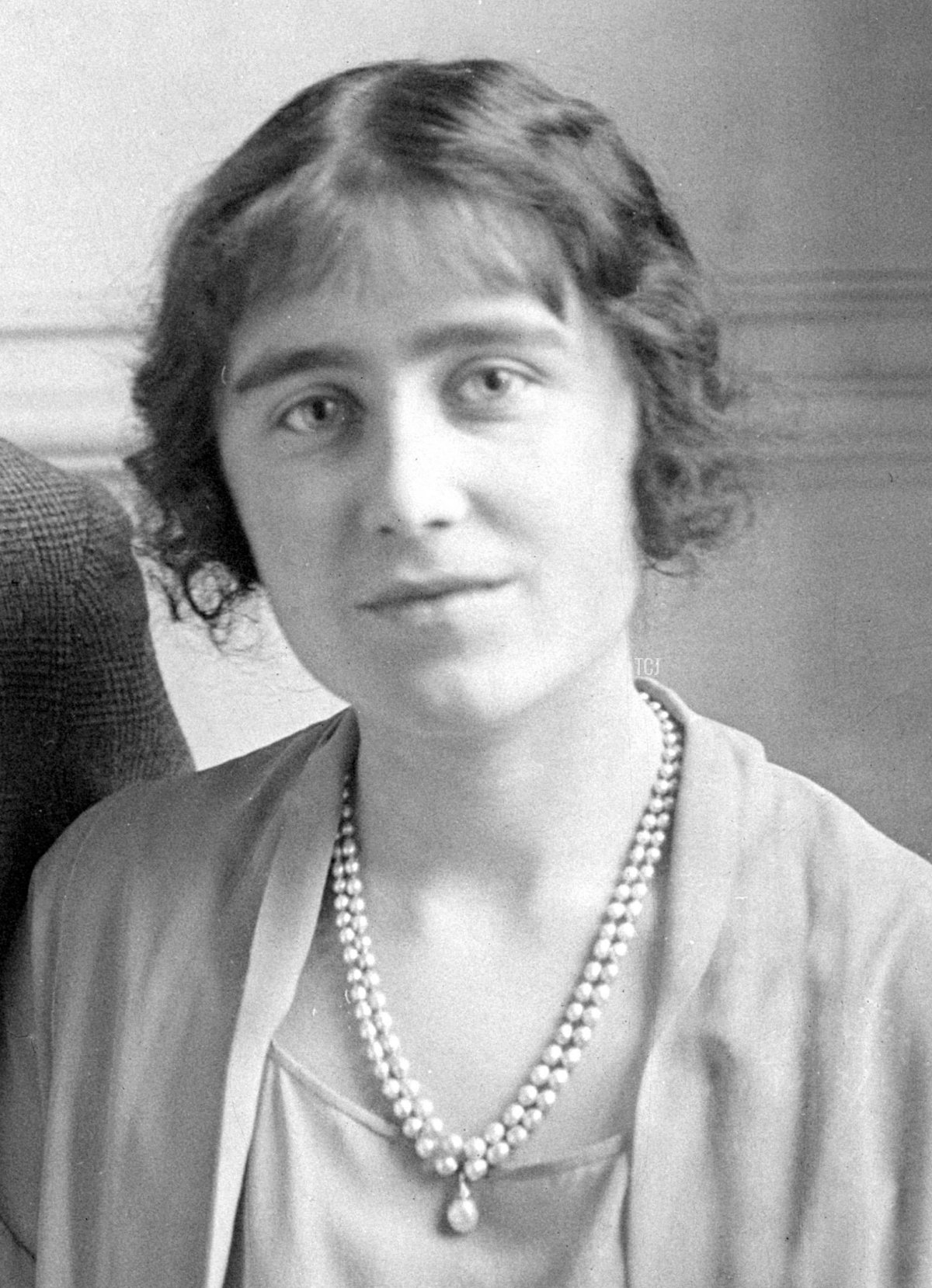
In fact, I think it’s the very same pearl necklace that she wore in her engagement portraits in January 1923. She wore the necklace often during this period.
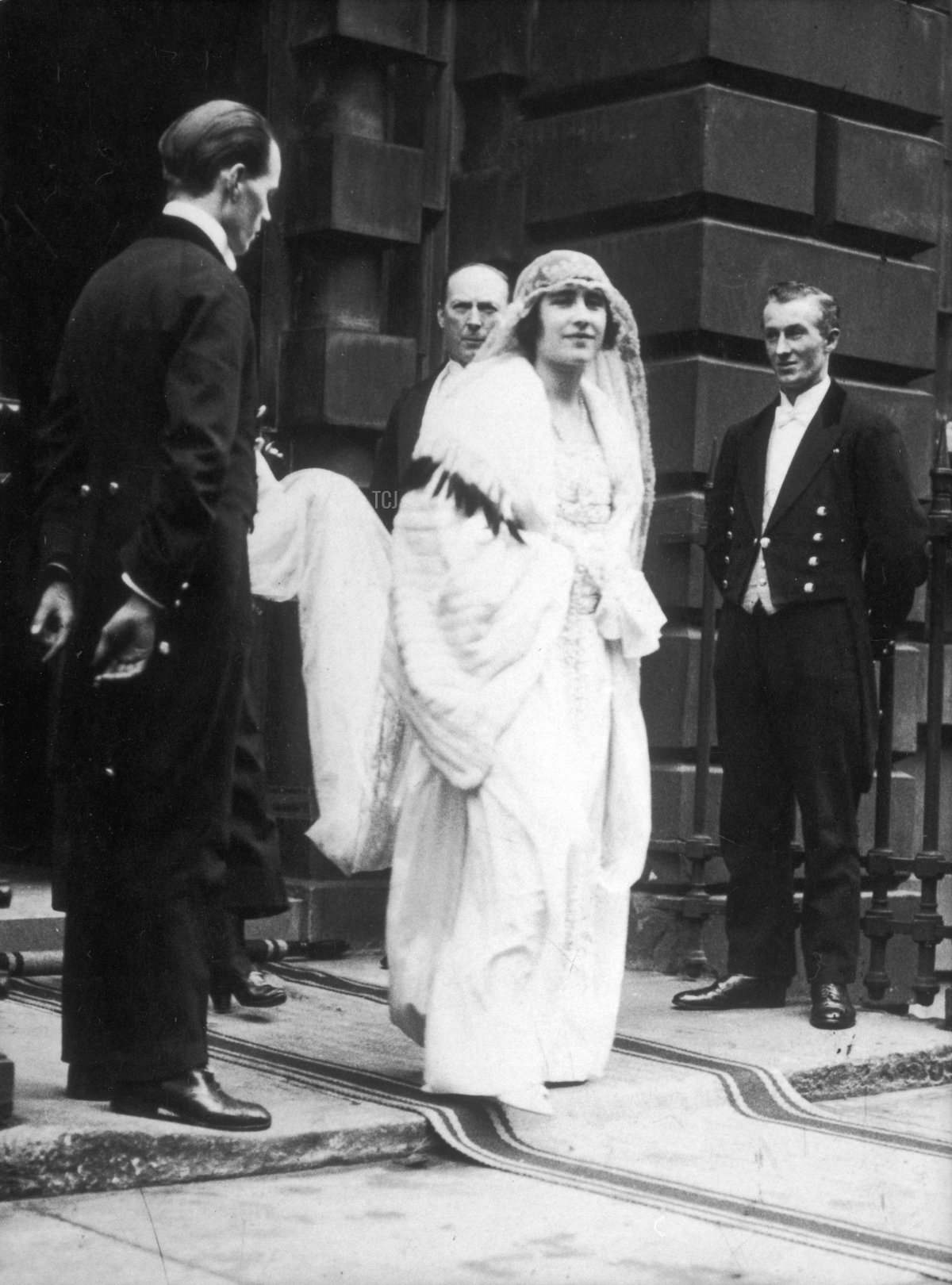
On the day of the royal wedding, Lady Elizabeth woke up late in the morning at 17 Bruton Street, the London home rented by her parents, the Strathmores. The day was cold and blustery, with intermittent rain showers, so as Elizabeth put on her wedding dress and prepared to leave for the drive to the Abbey, she threw on an ermine cape that had been given to her by King George V as a wedding present. Photographers captured the bride stepping out of the house and climbing in to the state landau that would carry her with her father to the wedding ceremony. Despite the weather, crowds cheered the bride all along the route.
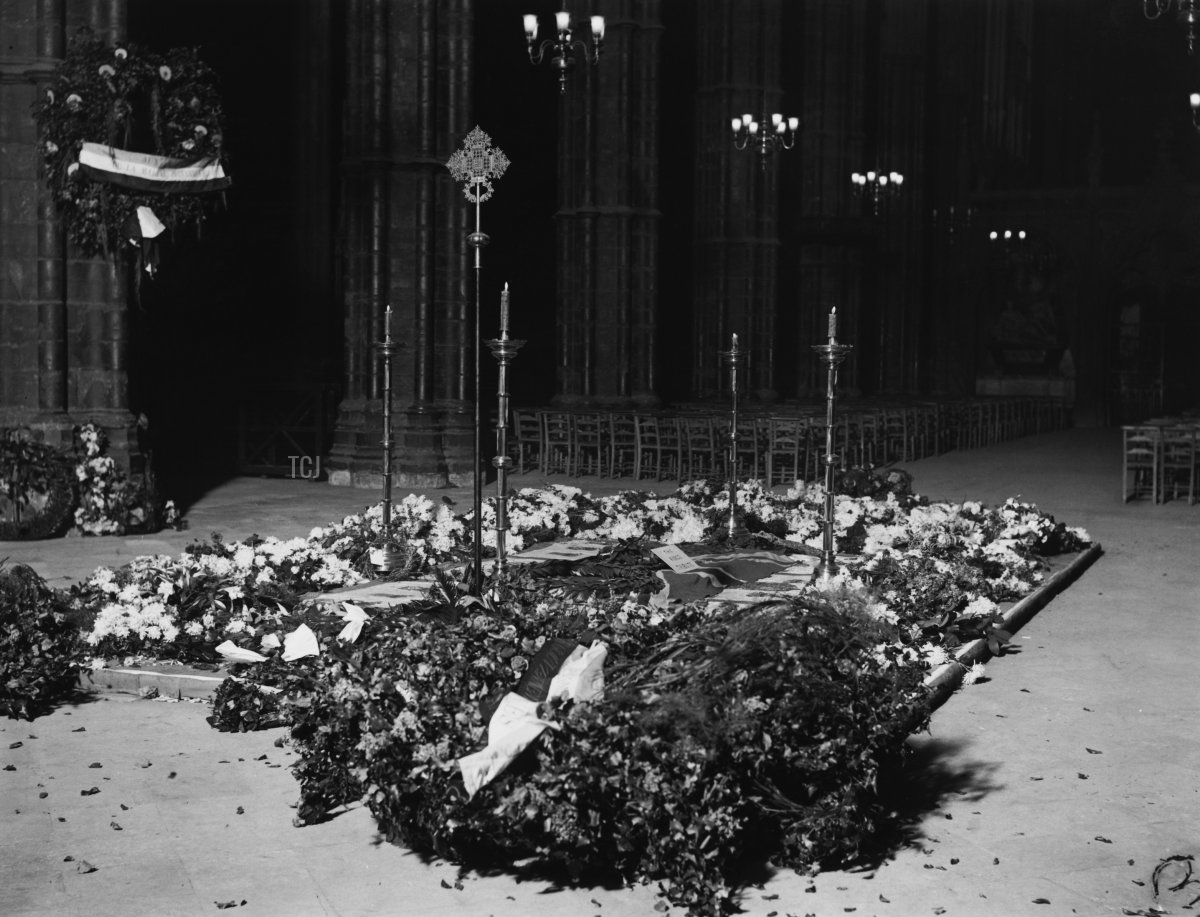
When Lady Elizabeth and Lord Strathmore arrived at the Abbey, the clergy formed a procession that would lead the bride down the aisle. But, as her official biographer, William Shawcross, recalled, “one of the clergy proceeding her fainted” before the procession could get going. They were paused for a long moment beside the Tomb of the Unknown Warrior, the grave of an unidentified British soldier who had died on the battlefield in France. The tomb was the only one in the Abbey floor that was not covered that day by a red carpet, which had been put down as part of the wedding preparations.
The tomb was a relatively new addition to the Abbey. The unknown warrior had been buried there in a grand, poignant state funeral two and a half years earlier in November 1920. The Abbey had been filled with mourners, including 100 women who had lost their husbands and all of their sons in the conflict. After the funeral, the tomb was covered with a slab of black marble engraved with brass from melted-down ammunition. The newly-sealed tomb is pictured above just a week after the funeral service.
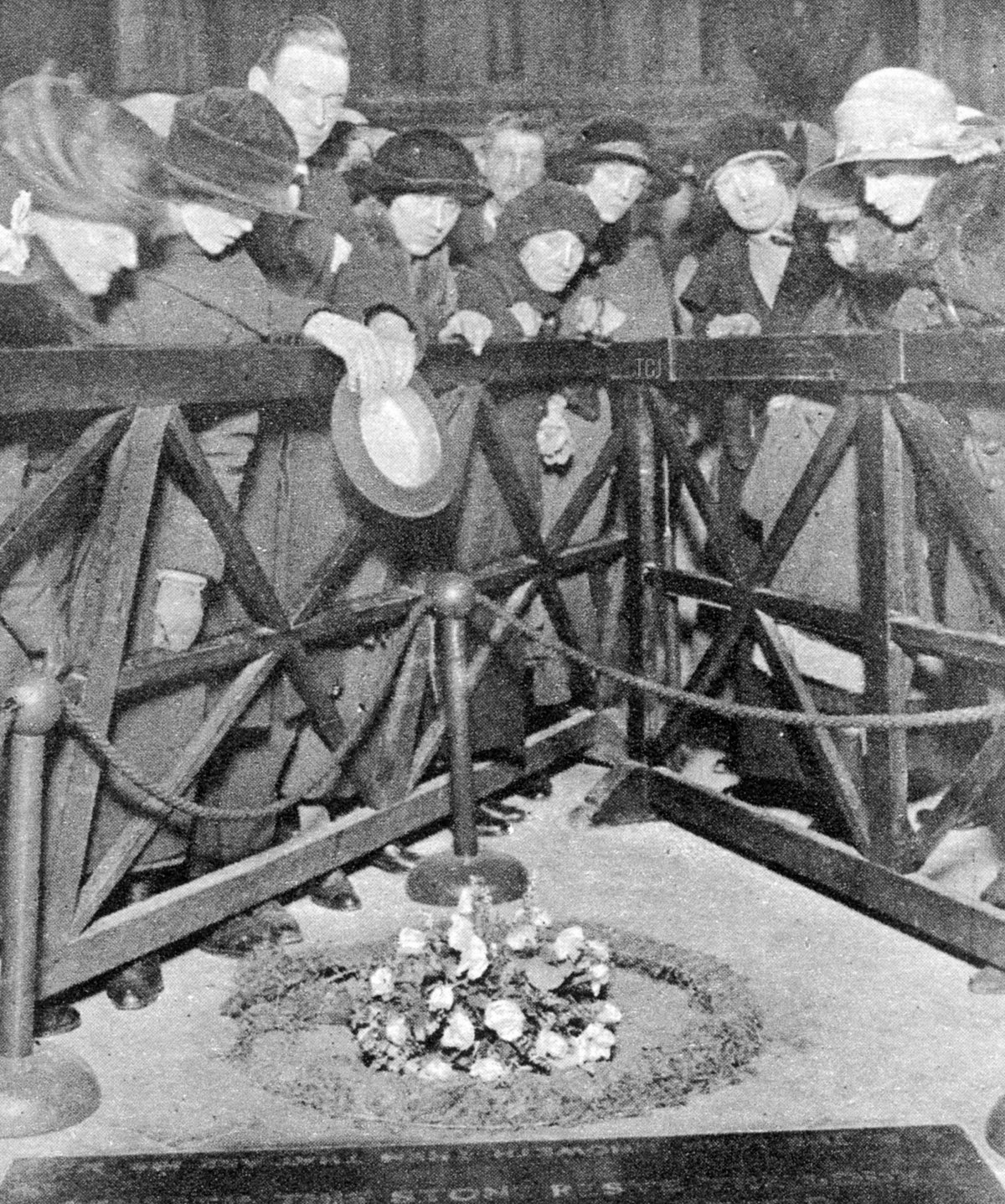
Lady Elizabeth knew what it was like to lose a loved one in war. Her beloved brother, Captain Fergus Bowes-Lyon, had been killed during the Battle of Loos in 1915. His body was never recovered. As the bridal procession began to reform on the wedding day, Lady Elizabeth suddenly dropped her father’s arm and approached the tomb. She never spoke about the moment that followed, so we can’t precisely know her motivation, but her late brother was surely on her mind as she crouched down and placed her bridal bouquet of roses and white heather on the tomb.
Reporters noted that her spontaneous gesture “touched all hearts” on the day, and visitors to the Abbey in the days after the wedding gathered to view the new Duchess’s tribute. Elizabeth started a tradition that day: royal brides now have their wedding bouquets taken to the Abbey to be placed on the tomb after their official portraits have been taken following the ceremony. Even brides who aren’t married at the Abbey, like the Duchess of Sussex and Princesses Beatrice and Eugenie, have had their bouquets taken there to be placed on the tomb.
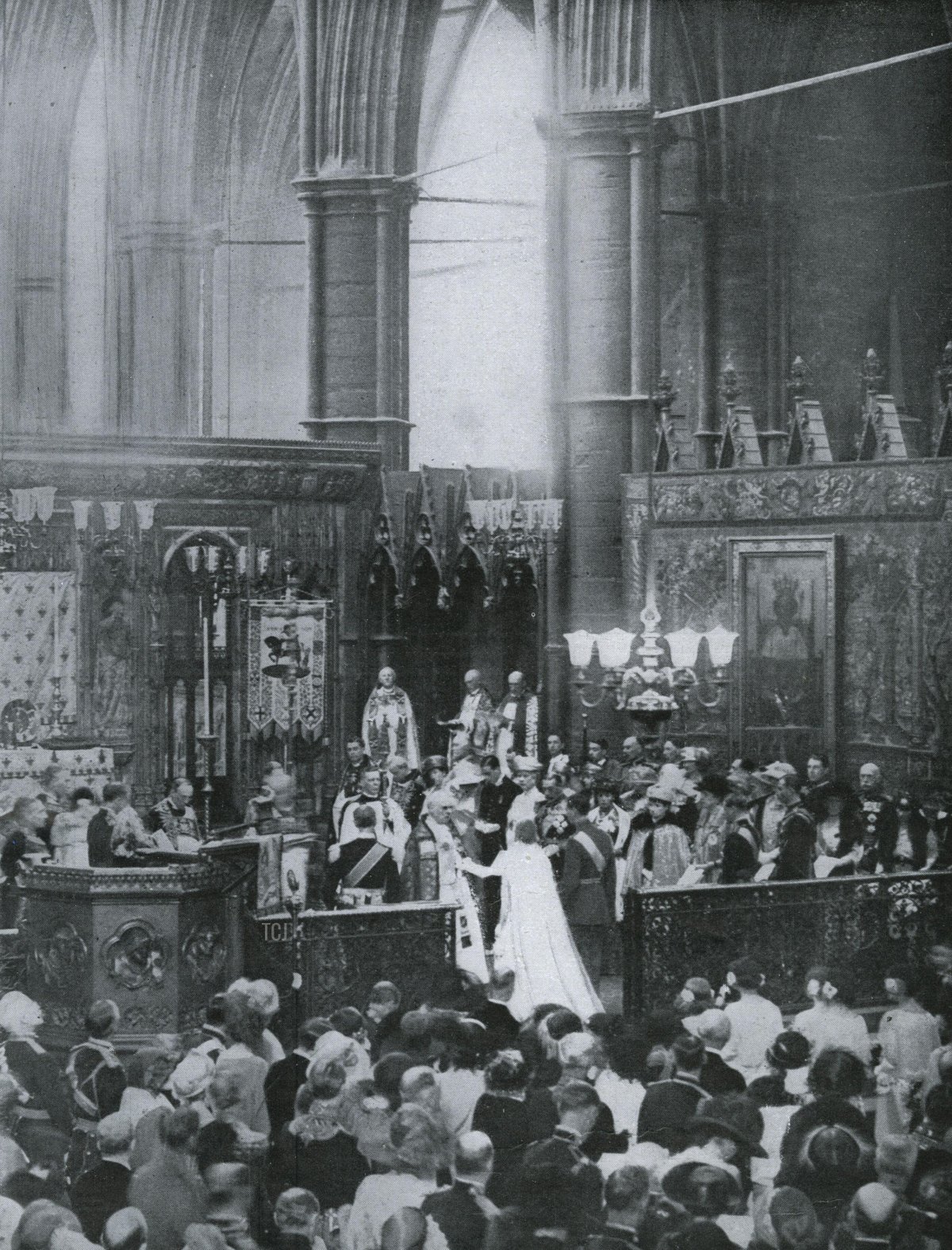
Lady Elizabeth continued up the aisle of the Abbey sans bouquet, joining Prince Albert at the chancel rail. The ceremony was conducted by the Dean of Westminster, Herbert Edward Ryle, and the Archbishop of Canterbury, Randall Davidson. The Guardian noted that, at the moment the bride arrived beside her groom, “the sun shone in dazzlingly and changed the whole appearance of the scene,” adding, “One saw Queen Alexandra and Queen Mary smiling as they glanced up at the happy omen.”
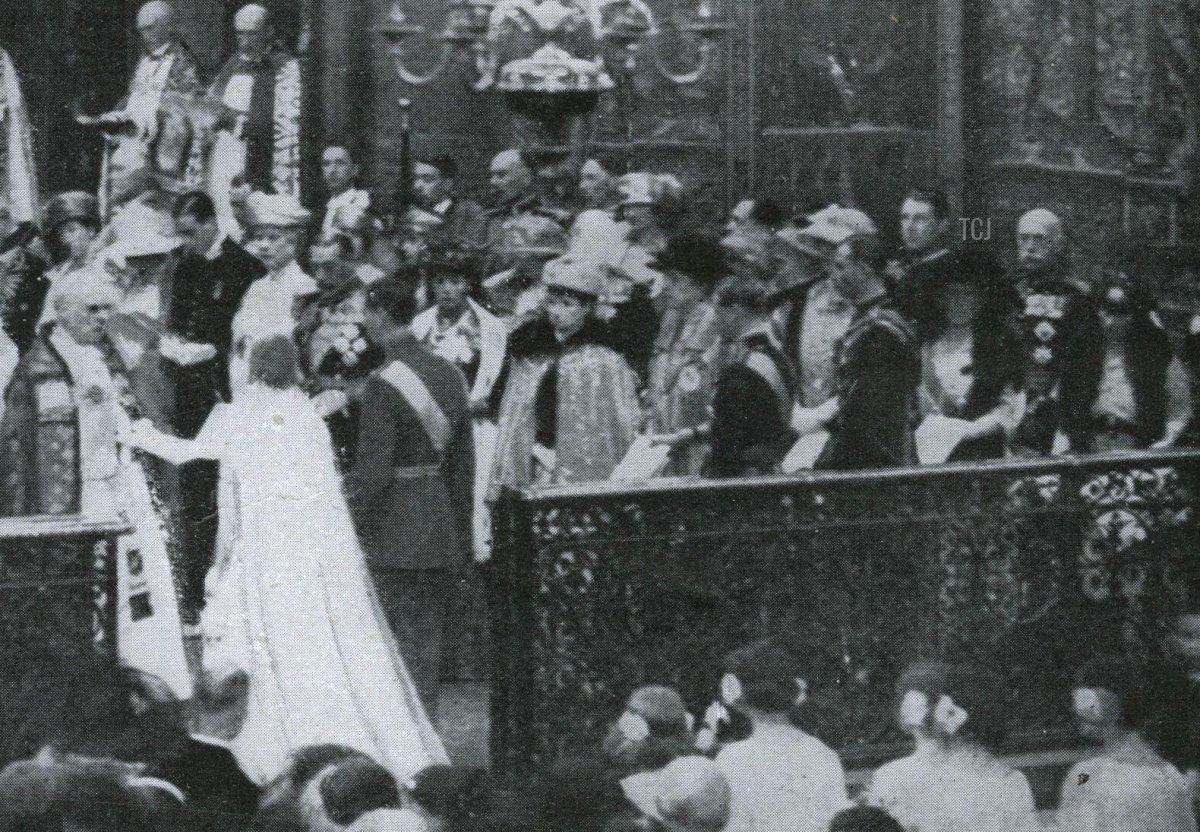
The royal family had gathered en masse at the Abbey for the wedding ceremony. You’ll be able to spot several familiar faces in this photograph, one of the few taken of the actual wedding itself. British royals in attendance were King George V and Queen Mary with the Prince of Wales, Prince Henry, Prince George, Princess Mary and Viscount Lascelles; Queen Alexandra with Princess Victoria; the Princess Royal with Princess Maud of Fife; the Duke of Connaught with Lady Patricia Ramsay and Captain Alexander Ramsay; Princess Christian with Princess Helena Victoria and Princess Marie Louise; Princess Louise, Duchess of Argyll; and the Marquess and Marchioness of Carisbrooke. Others who might have been expected to attend were away from London—Prince and Princess Arthur of Connaught were in South Africa, where he was serving as Governor-General, and Princess Beatrice was at a health resort, Vernet-les-Bains, in France.
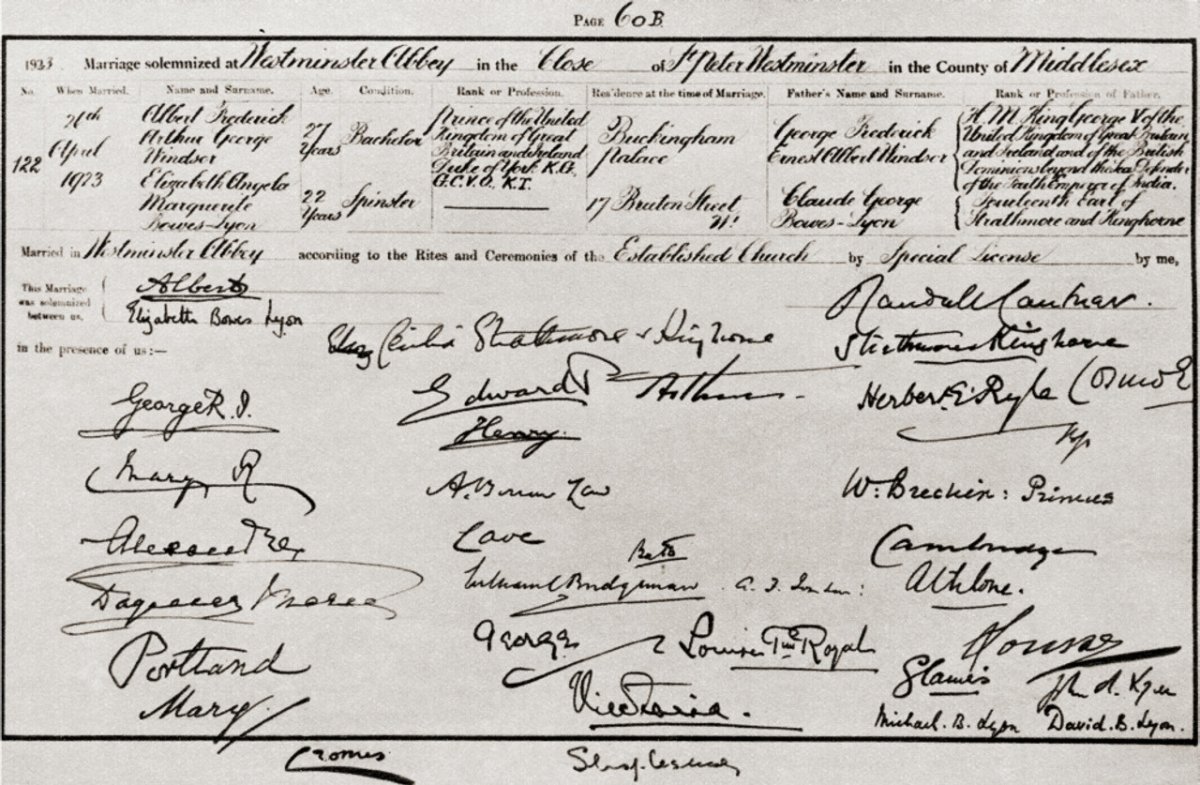
Many of the royal guests signed the wedding registry. Several of members of the (formerly royal) Teck family were there as well: the Earl of Athlone and Princess Alice, Countess of Athlone with Lady May Cambridge (a bridesmaid) and Viscount Trematon; the Marquess and Marchioness of Cambridge with the Earl and Countess of Eltham, Lady Mary Cambridge (a bridesmaid), Lord Frederick Cambridge, and Lt.-Col. Evelyn and Lady Helena Gibbs. So were additional members of the Mountbatten/Battenberg branch of the family: the Marquess of Milford Haven, Lord and Lady Louis Mountbatten, and Lady Louise Mountbatten. Lady Helena Gleichen, Queen Victoria’s great-niece, was in attendance as well.
Foreign royals in the Abbey included Empress Marie Feodorovna of Russia with Grand Duchess Xenia Alexandrovna; Princess Maria of Greece with Admiral Perikles Ioannidis; and Prince Paul of Serbia. The groom’s uncle and aunt, King Haakon VII and Queen Maud of Norway, and his cousin, Crown Prince Olav, were unable to attend. They were in Denmark to celebrate the silver wedding anniversary of King Christian X and Queen Alexandrine at Fredensborg.
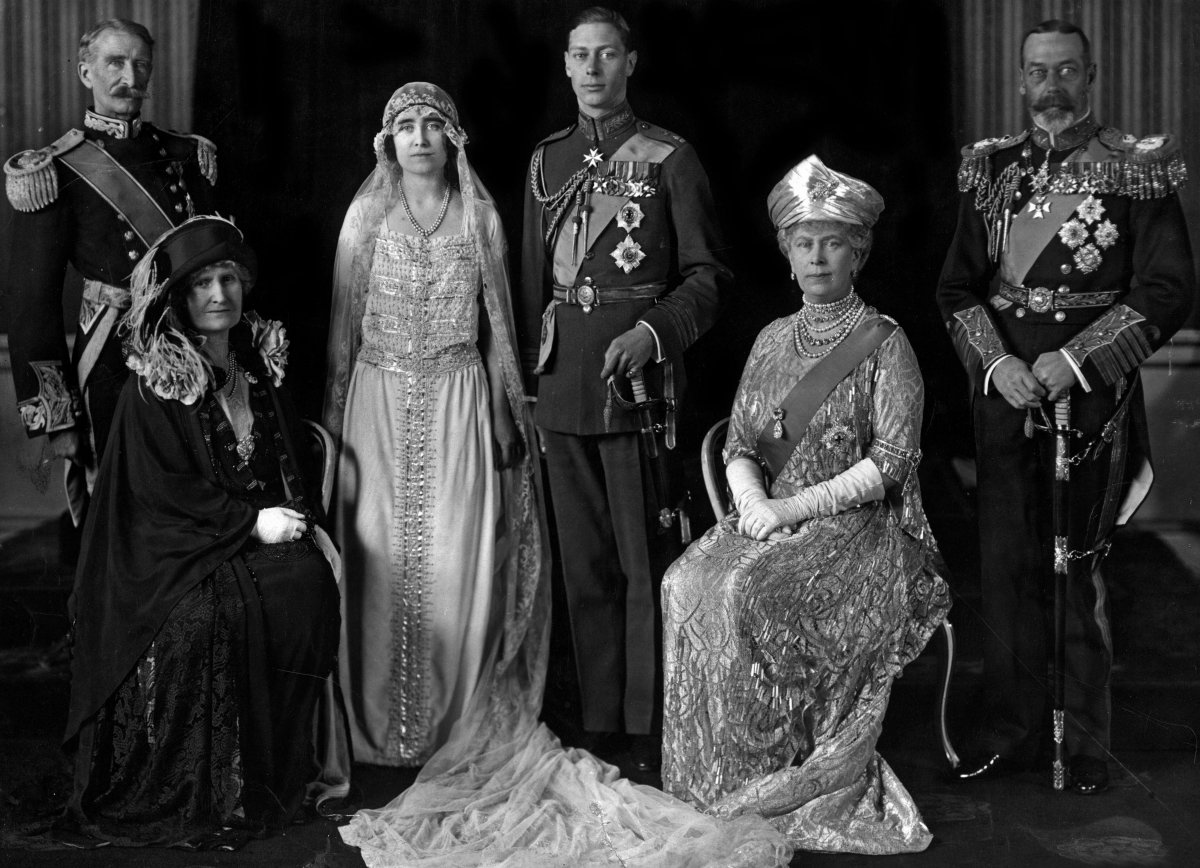
The newlyweds posed for portraits with their families at the palace after returning from the wedding. Here’s the bride and groom with the King and Queen and the Strathmores.
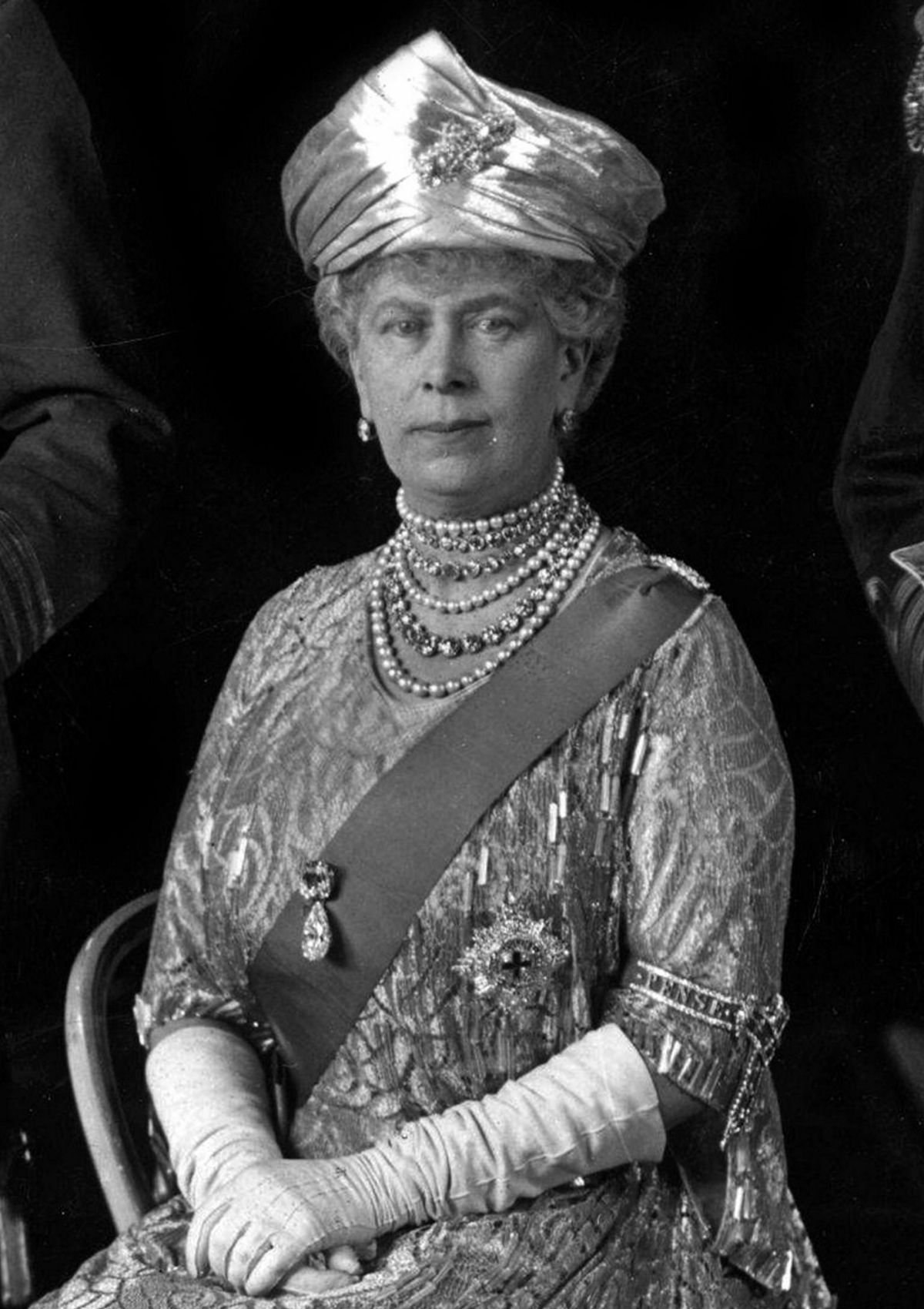
Queen Mary wore a striking ensemble in shades of aquamarine blue and silver. Her jewelry for the day included diamond earrings, three diamond necklaces, three pearl necklaces, the Cullinan III & IV Brooch, and the jewel-studded armlet of the Order of the Garter. The diamond brooch pinned to her hat is the one that many believe was later reworked as a pair of earrings.

Cecilia Strathmore, as was apparently her general habit, wore black to the wedding. The reporter for the Daily Telegraph observed that the countess was “a dignified figure in a jet-embroidered, undraped dress of black marocain, with a black satin cape, and a hat of black satin and lace trimmed with blue ospreys.” She accessorized with pearls and diamonds, including an interesting scroll brooch.

King George and Queen Mary also took the opportunity to have new portrait made featuring all of their surviving children. They’re joined here by the Prince of Wales, the Duke of York, Viscountess Lascelles (later the Princess Royal and Countess of Harewood), Prince Henry (later the Duke of Gloucester) and Prince George (later the Duke of Kent). Princess Mary—who’d given birth to her first son, George, just a few weeks earlier on February 7, 1923—wore an ensemble of cream-colored lace with blue and gold accents. She wore a brooch and a sautoir-length necklace with a large pendant.
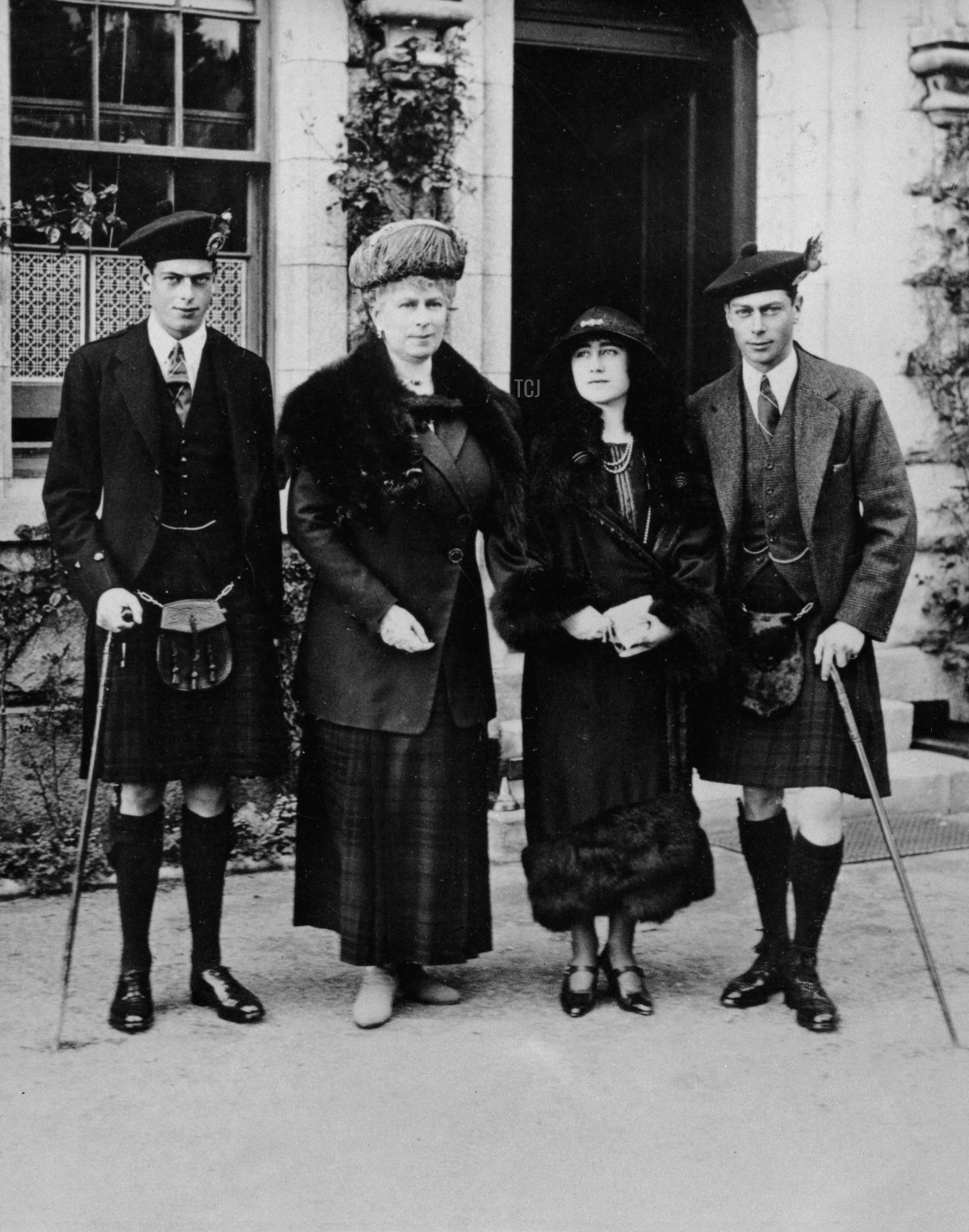
After the wedding festivities had concluded, the Duke and Duchess of York headed off on their honeymoon, which included a stay at Polesden Lacey, the palatial home of Mrs. Ronnie Greville—who would eventually bequeath a treasure trove of jewels to Elizabeth. But Elizabeth also brought in a big haul of jewels as part of these wedding celebrations in 1923. Stay tuned for an article devoted to some of the highlights tomorrow.
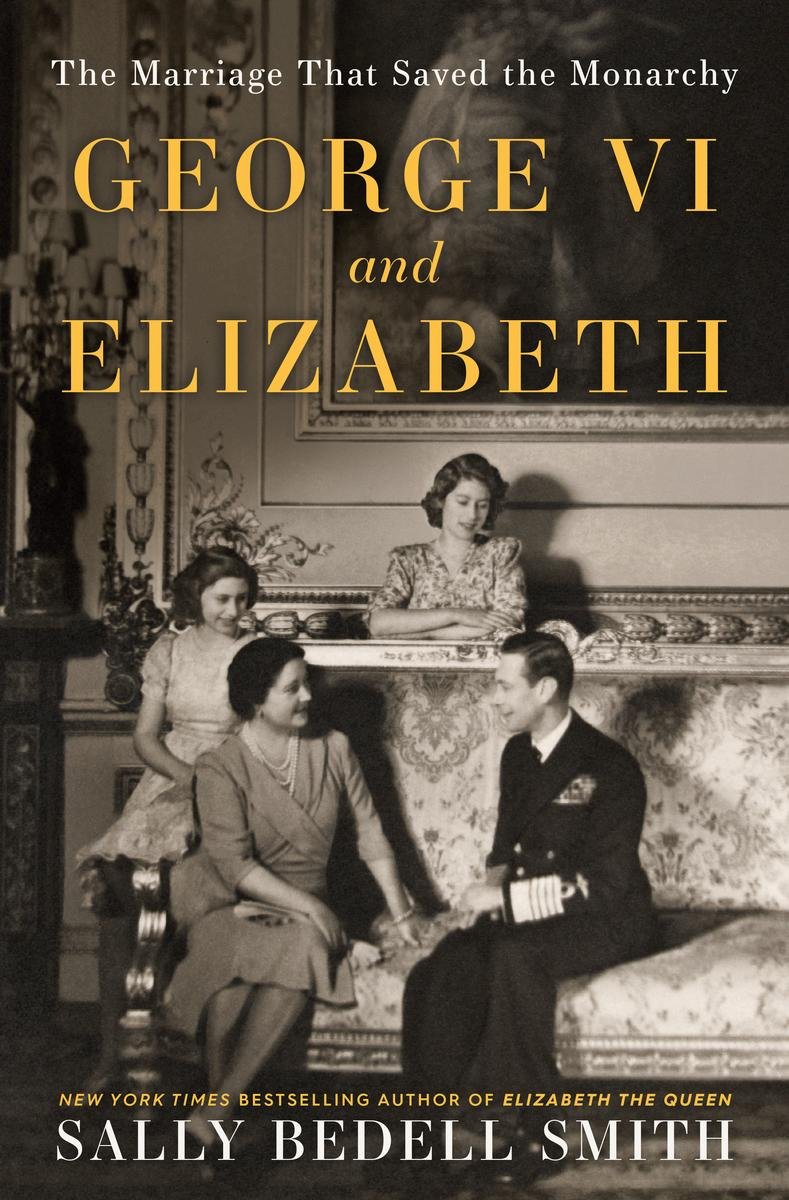
But before I go today, a recommendation. While doing the research for this article, I thoroughly enjoyed reading the new joint biography of King George VI and Queen Elizabeth by Sally Bedell Smith. George VI and Elizabeth: The Marriage That Saved the Monarchy was published recently to coincide with the 100th anniversary of the couple’s wedding, and it’s really a brilliant look at their marriage, which turned out to be a crucial part of the monarchy’s survival through the years of abdication and war. Highly, highly recommended.
Leave a Reply
You must be logged in to post a comment.